Take Me to the Recipes
The year is 1966. Rain lashes against our old VW Beetle as we wind our way from Johannesburg, South Africa, navigating the Oshoek border into Swaziland. This wasn’t just another arrival; it was the start of a new life.
it was a homecoming I wouldn’t fully understand until much later. As British expats, we were about to embark on eight idyllic years in this oasis of a country, a land that would forever captivate our hearts, minds, and spirits.
Swaziland, now Eswatini, wasn’t just breathtaking scenery (though oh, the majestic views between Ermelo – In South Africa – and Mbabane!). It was the feeling, upon arriving at our new house, of being truly home. A feeling I haven’t replicated since.
This piece is my attempt to share Eswatini’s magic, focusing on one of the things that made it so special for me: the food. More than just recipes (although we have 25 delicious ones to share!), I want to capture the essence of this unique corner of the world, the smallest monarchy with a vibrant soul.
Eswatini cuisine is a delightful combination of locally sourced ingredients and slow-cooking techniques. It’s not just delicious; it’s deeply nourishing, reflecting generations of culinary heritage passed down with love. So, join me on this culinary adventure, and let’s explore the flavors that made Eswatini my childhood haven, one delicious bite at a time.
Take Me to the Recipes
Eswatini (Swaziland) Cuisine Key Takeaways:
- Swaziland has a rich food culture with unique flavors and cooking techniques.
- Traditional Swazi dishes are at the heart of Swaziland’s culinary heritage.
- Swazi cuisine focuses on locally sourced ingredients and slow-cooking techniques.
- Swaziland’s cuisine is not only delicious but also nutritious.
- Join us on a culinary journey to discover the authentic cuisine of Swaziland.
Where is Eswatini (Swaziland)

The Kingdom of Eswatini is a land-locked country to the east of South Africa. It is almost entirely surrounded by the larger country, but also shares a border with Mozambique. Eswatini is mountainous in the west, dropping via uplands and valleys to lowlands in the east

Index to the Contents
- Take Me to the Recipes
- More Articles
- Interesting Facts About Eswatini (Swaziland)
- Eswatini’s (Swaziland’s) History and the Affect It Has Had on the Cuisine
- What impact has the Climate and Geography had on Swazi Food?
- Understanding the Essence of Eswatini Cuisine
- Eswatini Culinary Traditions
- Traditional Eswatini (Swaziland) Cuisine: A Taste of The Culinary Delights
- Swazi National Dish
- Popular Swazi Dishes
- How Healthy is Eswatini Cuisine?
- Cooking Techniques and Secrets of Eswatini Cuisine
- Exploring Eswatini Ingredients: The Flavors of Swaziland
- Must Try Eswatini Recipes: From the Kitchen to Your Plate
- Conclusion
- FAQ
You may also be Interested in the Following Articles
- North and South American Cuisine – A Culinary Expedition
- Europe Cuisine: Savor the Continent’s Best Culinary Secrets!
- African Cuisine: Discover the Bold Flavors & Global Charm!
- Asian Cuisine Unlock its Secrets – Taste, Health & Global Influence!
Savor iconic Eswatini Recipes – Click on each tantalizing Image to open up the Recipe






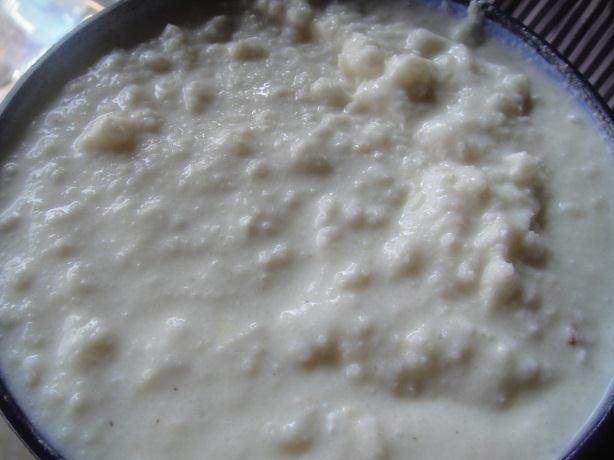


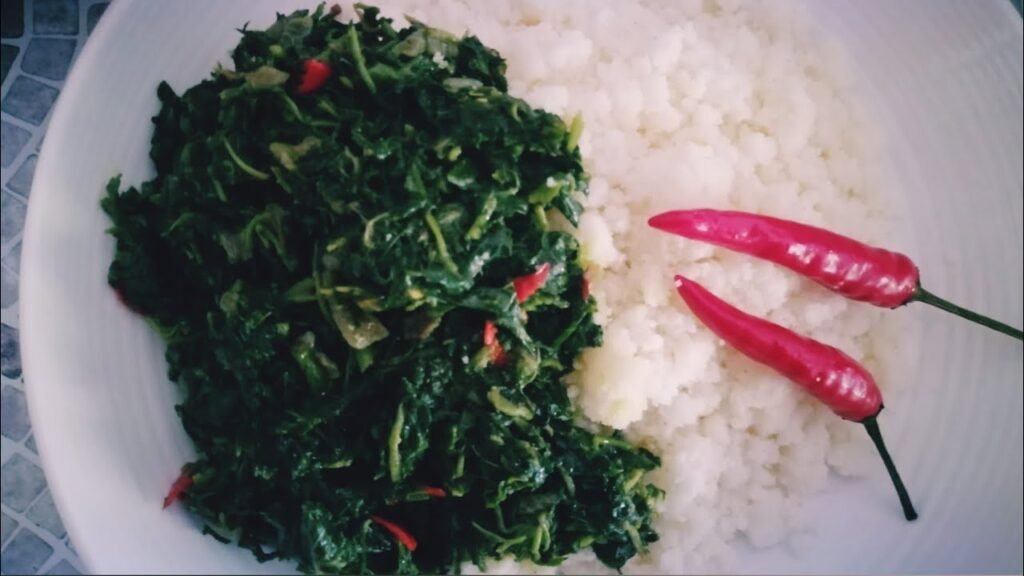

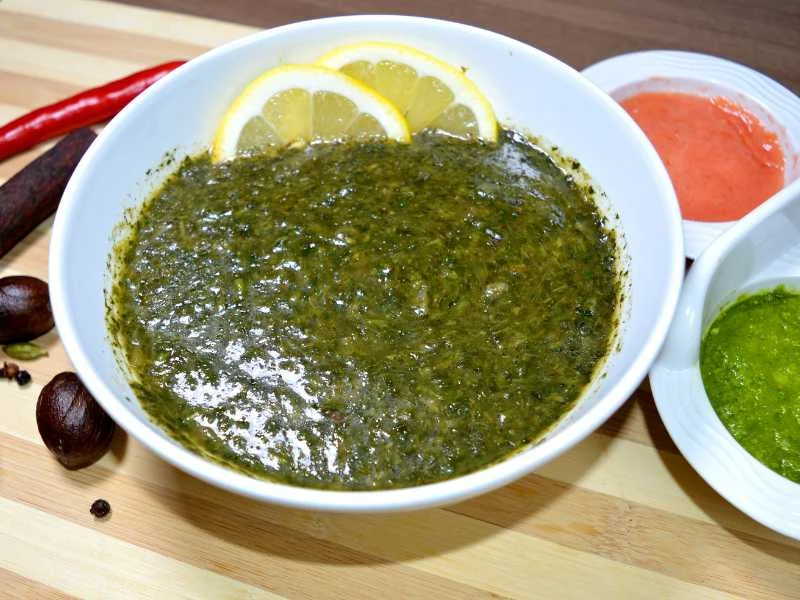




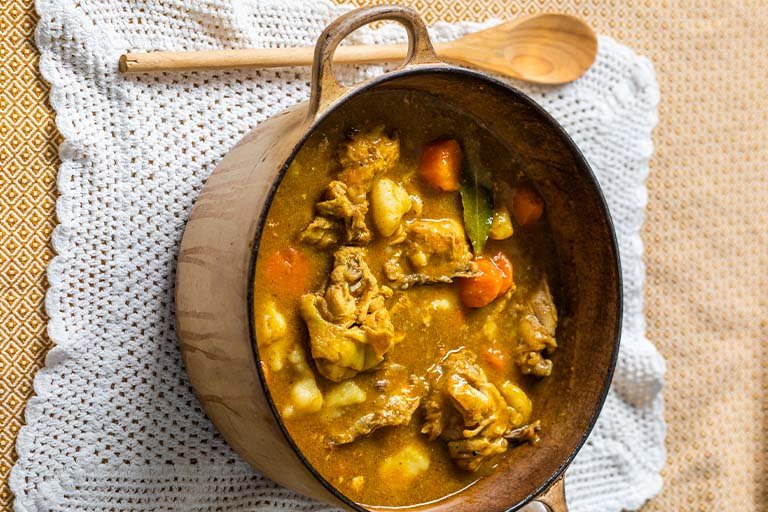

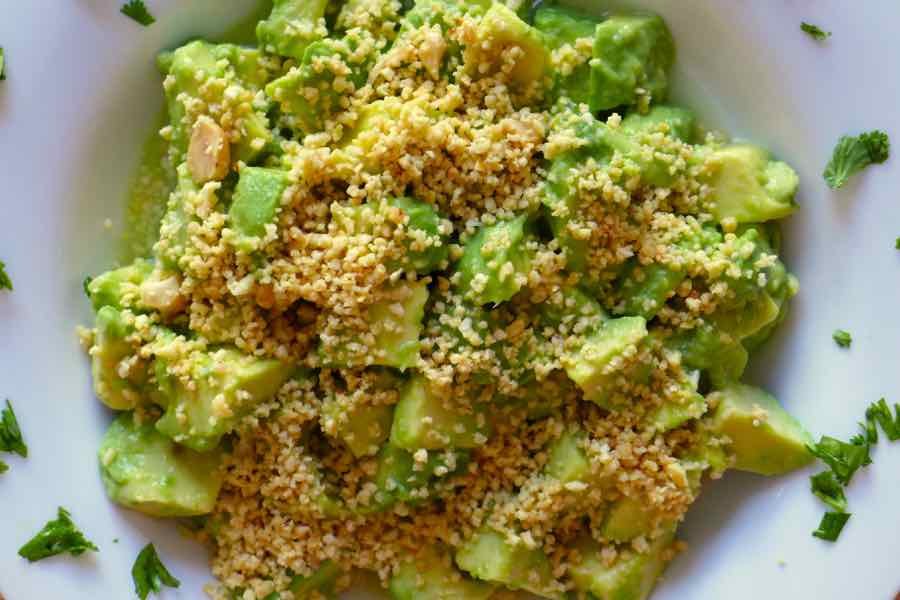

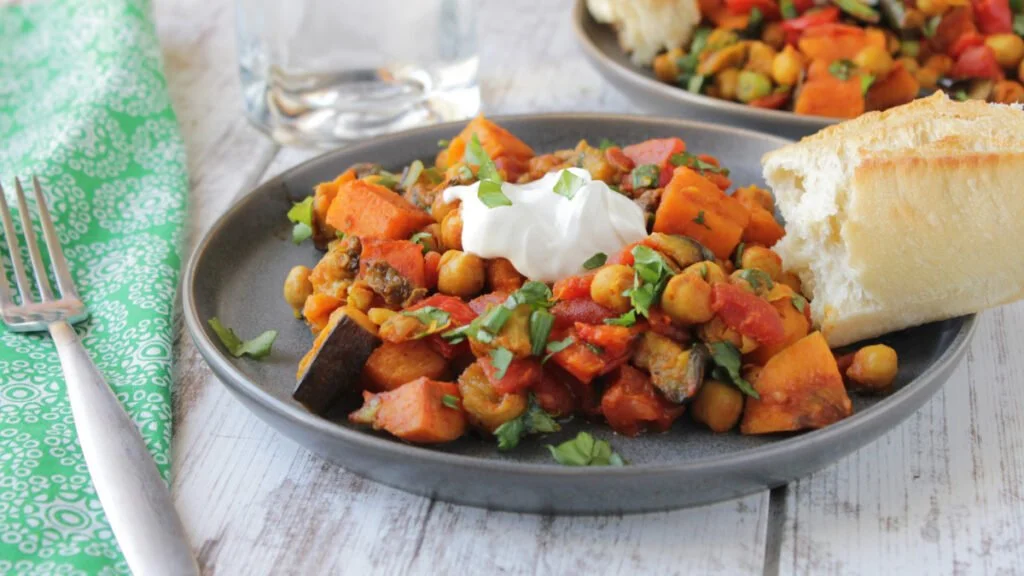


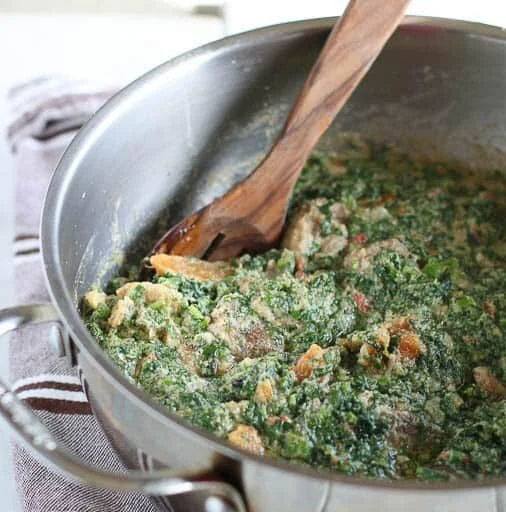
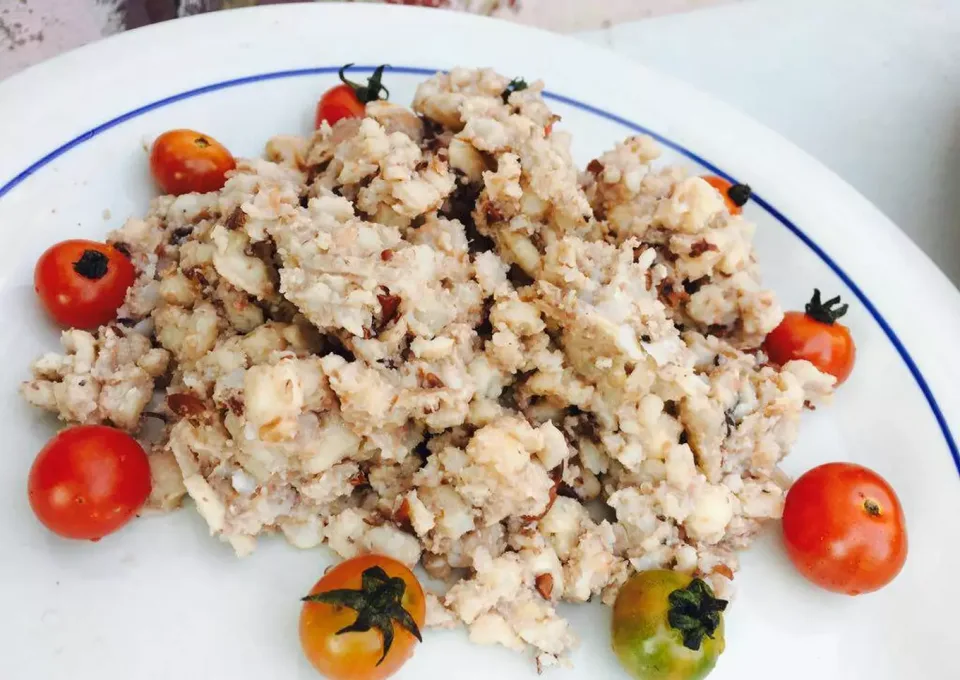
10 Intriguing Bites of Eswatini (Swaziland): Beyond the Usual
Royal Dance-Off

The “Incwala” kingship ceremony features the “reed dance,” where thousands of maidens perform for the king. This isn’t just a cultural display; it’s also a subtle reminder of the king’s power to choose a new wife from among the participants!
Coin Toss for a King?
Traditionally, the queen mother plays a crucial role in selecting the heir. Legend has it she throws two objects – a knobkerrie (club) and a half-calabash – and the prince who catches the calabash becomes king. While modernized, the queen’s influence remains significant.
Smallest Monarchy, Biggest Heart

Eswatini is the smallest absolute monarchy in the world, yet boasts a rich cultural heritage and diverse ecosystems, from mountains to savannas. Think big things come in small packages!
Hippopotamus Haven

Despite being landlocked, Eswatini boasts the world’s highest concentration of hippos in a protected area. Witness these fascinating creatures in their natural habitat at the Malolotja Nature Reserve.
Fire Festival Fiesta

The “Umhlanga” festival, held in September/October, is a vibrant celebration of new beginnings. Expect fire drills, symbolic cleansing rituals, and energetic traditional dances.
Swazi Gold (Not What You Think)

Forget precious metals! Eswatini’s “gold” comes in the form of tinkhobi, a traditional beer brewed from fermented sorghum and maize. It’s a social lubricant and cultural icon, enjoyed at ceremonies and everyday gatherings.
The Power of the Bee

Beekeeping is deeply ingrained in Swazi culture, with honey playing a vital role in traditional medicine and cuisine. The “Ncwala” ceremony even features a symbolic ritual involving bees and the king.
Swazi Sign Language

Did you know? Eswatini has its own unique sign language, distinct from international systems. This visual communication method plays a crucial role in the lives of the deaf community.
A Land of Many Names
Eswatini wasn’t always Eswatini! It was known as Swaziland until 2018, when the king announced the name change to reflect the country’s independence and identity.
Swaziland has its Own Claim to Fame

The international famous Academy award willing actor Richard E Grant was born and went to school in Swaziland.
References
The Nation of Swaziland had one Traffic Light in the 1960s






When my family arrived in Swaziland, there was only one traffic light in the country (Alistair Millan Street in Mbabane).
There was only one grocery store (Morgans), and so most of the Ex-patriot community would travel to Ermelo (in South Africa) once a month to purchase the groceries needed for the month ahead.
The country used to advertise the number of people killed on a Mountain Pass



In an effort to reduce the death toll the government used to regularly update a road sign displaying the number of people killed on the Malagwane hill pass on car accidents (between Mbabane and Manzini) in an effort improve driving standards.
The 1st known Marriage in Africa of a Black man to a White Woman took place in Swaziland

The Foot of Mzimba Mountain….. Rests Swaziland first Millionaire: Esitolo kaGeorge, The George Hotel. He founded the team later known as Manzini Wanderers, it was meant to be a social team for his workers.
King Sobhuza II, instructed that his personal friend whom he called “Mgonodi” and Sibali George’s sister Catherine “Kitty” Bennett later married into the Dlamini Clan, the first known official marriage of a white woman to a black man in Africa.
It was not legally recognised by colonial authorities. King Sobhuza decreed that they be buried at the foot of Mdzimba Mountains.
Croydon Farm was designated by King Sobhuza to be the official residence of Kitty, she and her brother George came from Croydon, a town the South of London.

King Sobhuza expressing his condolences to the Wife of Gordon’s brother about his personal loss to his child hood friends.
These are just a few of the many interesting, strange, and funny facts that make Eswatini a truly unique and fascinating place to visit. So, delve deeper and discover the hidden gems and vibrant culture this small kingdom has to offer!
Take Me to the Recipes
A Culinary Journey Through Eswatini’s History: From Hunter-Gatherers to Modern Fusion
Siyinqaba! This powerful phrase, meaning “We are a fortress,” echoes through the Kingdom of Eswatini.
Once a British protectorate, Eswatini gained independence in 1968 and stands as the last absolute monarchy in Africa. Since 1986, King Sobhuza, and then King Mswati III has steered the nation, balancing a rich cultural heritage with the currents of the modern world.
Eswatini’s diverse cuisine, boasting an intriguing blend of traditional and modern influences, reflects its rich and complex history. Let’s embark on a culinary adventure through time, exploring how each period shaped the Swazi plate:
Early Inhabitants (Before 1700)
Hunter-Gatherer Roots

The earliest Swazi communities, primarily hunter-gatherers, relied on wild plants, berries, and game. This laid the foundation for the use of indigenous ingredients like marula fruit, mopane worms, and baobab fruit in Swazi cuisine.
Centuries ago, the Nguni people migrated to the region, bringing with them pastoral practices and cattle rearing. This shaped a culinary landscape anchored in dairy products, beef, and goat meat. The significance of cattle is evident even today, as beef dishes like ‘sitfubi’, a sour milk soup, and ‘siphuphe setindlubu’, a thick porridge made from groundnuts, remain staples.
Hunter-Gatherer Roots
Bantu Migrations

Bantu migrations introduced sorghum and maize, now staples in Swazi cuisine. Dishes like sitfubi (fresh milk and cornmeal porridge) and sishwala (thick cornmeal porridge) emerged, demonstrating the reliance on these grains.
Zulu Wars (1817-1887)

Turbulent Times, Resilient Flavors: The Zulu Wars brought periods of displacement and conflict, impacting food security. However, resourceful Swazis adapted, incorporating wild foods like inkhobe (wild spinach) and umkhanyakude (wild mushrooms) into their diets.
Eswatini: Caught Between Boers and Brits – British Protectorate (1889-1968)

In the early 1800s, Eswatini faced threats from both the Zulu warriors and groups of Dutch settlers called Boers. These Boers, looking for fertile land and access to the sea, migrated from South Africa and set their sights on Eswatini.
At first, Eswatini welcomed the Boers, hoping for peaceful coexistence. They even gave the Boers some land. But things soon turned sour. The Boers kept wanting more land, disrespecting the Swazi people and their leaders.
Seeing the danger, Eswatini’s King Mswati sought help from the British, another powerful player in the region. In 1889, Eswatini turned to the British for protection against the Boers. Unfortunately, the British accepted a deal with the Boers in 1894, giving them control over Eswatini.
But the story doesn’t end there! In 1902, the British took over most of the power in the region, including Eswatini, without actually claiming it as their own territory. It wasn’t until 1903 that Eswatini officially became a British protectorate, a country under British control.
Finally, in 1968, after over 60 years, Eswatini gained its independence, becoming a free nation once again. So, Eswatini’s history is a complex one, shaped by the pressures of powerful neighbors and the struggle for independence.
British rule introduced new ingredients like tomatoes, onions, and spices, adding complexity to Swazi cooking. Meat consumption increased, evident in dishes like sishibo senkhukhu (chicken stew) and umkhunsu (dried goat meat).
King Sobhuza II (1921-1982)

Focus on Tradition: King Sobhuza II emphasized preserving Swazi culture and identity, reflected in the continued importance of traditional dishes and rituals. The annual Incwala ceremony showcased these traditions, featuring food offerings and symbolic feasts.
King Sobhuza II was a benevolent king who was greatly admired and loved by all the peoples of Swaziland.
King Mswati III (1986-Present)

Mswati III is an absolute monarch with unrestricted political power.
As did King Sobhuza, King Mswati practices polygamy and currently has 15 wives
Under his rule, political dissent faces harsh punishment, and pro-democracy protests have been met with violence.
In 2018, he renamed the country from “Swaziland” to “Eswatini” by decree
Modernization and Fusion: King Mswati III’s reign has seen increased globalization and modernization. While respecting tradition, chefs are incorporating international influences, creating fusion dishes like chicken curry with peanuts and fish served with sweet potato mash.
References:
- Britannica
- Swaziland National Trust Commission. (2002). Swaziland: A Kingdom of Culture. Jacana Media.
Note: This list provides a brief overview, and further research can be done to explore specific culinary trends and regional variations within Eswatini.
Take Me to the Recipes
What impact has the climate and geography had on Swazi Food?

The climate and geography of Eswatini (formerly known as Swaziland) significantly influence its food systems and agricultural practices. Let’s delve into this topic with references to scholarly work:

Vulnerability and Food Insecurity in Urban Areas of Swaziland
- A study conducted by the Swaziland Vulnerability Assessment Committee and the UN World Food Programme in 2008 examined the impact of high food prices on households in urban areas of Swaziland.
- The study highlighted the relationship between poverty, food security, survival activities, and HIV/AIDS.
- Two study sites were analyzed: Nsubane (a community facing acute food insecurity due to persistent droughts and crop failure) and Makhonza (a food-secure area).
- In Nsubane, where food insecurity prevailed, risky survival activities such as selling sexual favors and engaging in multiple sexual partnerships were common.
- In contrast, Makhonza, a food-secure community, had fewer risky activities.
- Poverty and food insecurity directly influenced people’s survival strategies, potentially exposing vulnerable households to HIV/AIDS.
Climate Change and Agriculture in Eswatini

- Climate change poses challenges to agriculture across Africa, including Eswatini.
- Hazards related to changing precipitation patterns, extreme weather events, and prolonged droughts impact food production and availability.
- These climate-related challenges affect livelihoods, food systems, and natural resources.

In summary, Eswatini’s climate and geography play a crucial role in shaping food security, livelihoods, and vulnerability to health risks. Understanding these dynamics is essential for sustainable development and effective policy interventions.
References
- Swazi VAC, & UNWFP. (2008). Vulnerability and food insecurity in urban areas of Swaziland: an assessment of the impact of high prices on households in four regions. Mbabane: Swaziland Vulnerability Assessment Committee and UN World Food Programme.
- Effects of climate change on agriculture in Africa. McKinsey.
- worldbank.org
Take Me to the Recipes
Understanding the Essence of Eswatini Cuisine

The cuisine of Eswatini (formerly known as Swaziland) is a delightful blend of traditional flavors, influenced by the seasons, geography, and cultural practices. Let’s explore the essence of Swazi cuisine:
Staple Foods
- Sorghum and maize are the cornerstones of Swazi meals. These grains are often served alongside goat meat, which is a popular livestock in the region.
- The farming industry in Eswatini relies on crops such as sugar cane, tobacco, rice, corn, and peanuts. Additionally, goat meat and beef are significant exports.
Traditional Dishes:
- Sishwala: A thick porridge typically served with meat or vegetables.
- Incwancwa: A sour porridge made from fermented cornmeal.
- Sitfubi: Fresh milk cooked and mixed with cornmeal.
- Siphuphe setindlubu: A thick porridge made from mashed ground nuts.
- Emasi etinkhobe temmbila: Ground corn mixed with sour milk.
- Umncweba: Dried uncooked meat (similar to biltong).
- Siphuphe semabhontjisi: Thick porridge made from mashed beans.
- Tinkhobe: Boiled whole maize.
- Umbidvo wetintsanga: Cooked pumpkin tops (leaves) mixed with ground nuts.
- Emahewu: A meal drink made from fermented thin porridge.
- Umcombotsi: Traditional brewed beer, known as “tjwala” in Siswati.
Market Delights
Local markets feature food stalls offering traditional Swazi dishes. Visitors can savor meat stews, sandwiches, maize meal, and seasonal roasted corn on the cob.
Influence and Adaptation
Over time, Swazi cuisine has been influenced by neighboring South African and Portuguese flavors.
Despite these influences, Swazi people take pride in preserving their culinary heritage and sharing it with others.
In summary, Swazi cuisine celebrates simplicity, local ingredients, and cultural traditions. It’s a delightful journey through flavors that reflect the heart of Eswatini.
References
- Wikipedia: Cuisine of Eswatini
- Culture Trip: 10 Delicious Swazi Foods
- Chefs Pencil: Top 20 Most Popular Foods in eSwatini
Take Me to the Recipes
Eswatini Culinary Traditions

Eswatini, formerly known as Swaziland, is a small landlocked country in Southern Africa with a rich cultural heritage, including distinct culinary traditions.
The cuisine of Eswatini is deeply rooted in the country’s history, traditions, and the availability of locally sourced ingredients. Here’s a glimpse into Eswatini’s culinary landscape:
Heritage and Influences

Eswatini’s culinary traditions draw influence from the indigenous Swazi people, who have inhabited the region for centuries. Additionally, the country’s culinary landscape has been shaped by the diverse influences of neighboring nations in Southern Africa. Th
e fusion of traditional Swazi ingredients with external influences contributes to the unique flavors found in Eswatini’s dishes.
Staple Foods
- Maize (Corn): As in many African countries, maize is a staple in Eswatini. It is a versatile ingredient used to make porridges, bread, and various dishes like “Emasi etinkhobe” (maize porridge with sour milk).
- Sorghum: Another essential grain, sorghum, is often used to make traditional beers like “Buganu” and “Ingudu.”
- Vegetables: Locally grown vegetables, including spinach, pumpkin, and sweet potatoes, are commonly featured in Swazi cuisine.
- Meat: Livestock farming is prevalent in Eswatini, and meat, particularly beef and goat, is a significant part of the diet. Grilled or stewed meat dishes are popular.
Traditional Dishes
- Umncweba: This is a traditional Swazi dish consisting of sun-dried meat, often beef or game meat. It is a preserved delicacy with a rich flavor.
- Sidvudvu: A porridge made from groundnuts (peanuts) and sorghum, sidvudvu is a nutritious and filling dish.
- Sishwala: A traditional maize porridge that is a staple in Swazi households. It can be paired with various side dishes.
Culinary Techniques
- Grilling: Barbecuing or grilling meat is a popular cooking method, especially during social gatherings and celebrations.
- Steaming: Steaming is commonly used to prepare foods like dumplings and bread.
Beverages
- Buganu: This traditional beer is made from fermented sorghum and is a significant part of Swazi celebrations and ceremonies.
- Ingudu: Another fermented beverage, Ingudu, is made from sorghum and is often enjoyed during festive occasions.
Community and Celebration
Eswatini’s culinary traditions are deeply intertwined with community and celebration. Many traditional dishes are prepared and shared during ceremonies, festivals, and social events, fostering a sense of unity and cultural identity.
Take Me to the Recipes
Swazi National Dish
Eswatini, formerly known as Swaziland, does not have a single designated national dish. However, there are several traditional dishes that hold significant cultural importance and are widely enjoyed throughout the country. One such dish that stands out is “Sishwala” or “Emasi etinkhobe,” a traditional maize porridge often served with sour milk. While not an official national dish, Sishwala is deeply ingrained in Swazi culinary traditions and is a staple in many households. Here’s a closer look:
Sishwala (Emasi Etinkhobe)

Background and Cultural Significance: Sishwala is a simple yet hearty dish that reflects the agricultural roots of Eswatini. It is a maize-based porridge served with sour milk, known locally as “emasi.” Maize, a staple crop in the region, symbolizes sustenance and agricultural abundance. The sour milk is a result of natural fermentation, adding a unique tangy flavor to the dish.
Ingredients
- Maize meal
- Water
- Sour milk (emasi)
Preparation
Cooking the Maize Porridge (Sishwala):
- Maize meal is mixed with water to create a thick porridge. The mixture is stirred continuously to avoid lumps.
- The porridge is cooked until it reaches a smooth and thick consistency.
Serving with Sour Milk (Emasi etinkhobe):
- Sour milk, obtained through fermentation, is poured over the cooked maize porridge.
- The combination of the porridge and sour milk creates a balanced and nourishing dish.
Culinary Techniques
Maize Porridge: The preparation of the maize porridge involves skillful stirring to achieve a smooth texture without lumps.
Sour Milk Fermentation: Traditional fermentation techniques are employed to produce sour milk, which enhances the flavor profile of the dish.
Cultural Context
Sishwala is more than just a meal; it holds cultural significance in Swazi society. It is often prepared during communal gatherings, celebrations, and family meals. The sharing of Sishwala emphasizes unity and togetherness within the community.
Nutritional Information
- Maize: A good source of carbohydrates and dietary fiber.
- Sour Milk (Emasi): Rich in probiotics and contributes to gut health.
Take Me to the Recipes
Popular Swazi Dishes

Eswatini’s cuisine offers a delicious glimpse into its culture and traditions. Sorghum and maize are the cornerstones, often featuring in porridges (both fermented and unfermented) served with hearty stews or vibrant vegetables. Other popular ingredients include:
- Vegetables: Corn on the cob, tomatoes, avocados, yams, baobab fruit, and various greens.
- Flavorings: Green onions, garlic, chili, lemon, lime, and ginger add depth and zest.
- Fats and Oils: Palm oil, coconut, or peanut oil provide richness and cooking versatility.
- Proteins: Despite being landlocked, seafood finds its way to Swazi tables alongside staples like goat meat.
Essential Eats on the Swazi Table:
- Umkhunsu: Dried, cooked goat meat (a Swazi favorite).
- Emasi: A versatile fermented milk base found in:
- Emasi lavutiwe: Ground corn and fermented milk.
- Emasi emabele: Fermented sorghum and milk.
- Emasi etinkhobe temmbila: Curdled milk and corn.
- Sembila sinkwa: Classic corn bread.
- Sishibo senkhukhu: Hearty chicken stew.
- Sishwala: Thick porridge, often served with meat or vegetables.
- Incwancwa: Sour porridge made from fermented cornmeal.
- Sitfubi: Fresh milk cooked and mixed with cornmeal for a creamy porridge.
- Setindlubu siphuphe: Thick peanut puree porridge.
- Sidvudvu: Pumpkin porridge with cornmeal.
- Siphuphe semabhontjisi: Thick oatmeal made from bean purée.
- Tinkhobe: Whole corn porridge.
- Umbidvo wetintsanga: Cooked pumpkin leaves with peanuts.
- Emahewu: Refreshing fermented porridge drink.
- Umcombotsi/Tjwala: Traditional brewed beer.
Remember: This is just a taste of the diverse and delicious Swazi cuisine. So, grab your fork and get ready to explore!
Take Me to the Recipes
How Healthy is Eswatini Cuisine?
The cuisine of Eswatini (formerly known as Swaziland) reflects a rich blend of tradition, local ingredients, and cultural practices. Let’s explore the health aspects of Eswatini cuisine, drawing insights from scholarly sources:
Staple Foods and Nutritional Impact
- Sorghum and maize are the primary staples in Swazi meals. These grains provide essential carbohydrates and energy.
- Goat meat, a popular livestock in Eswatini, is often served alongside these grains. It contributes protein and essential nutrients.
- The farming industry also relies on crops such as sugar cane, tobacco, rice, and peanuts. These crops play a role in the local diet and economy.
- While staple foods are nutritious, their health impact depends on portion sizes, cooking methods, and overall dietary diversity.
Traditional Dishes and Health Considerations
- Sishwala: A thick porridge made from maize or sorghum. It provides energy but lacks certain vitamins and minerals.
- Incwancwa: A sour porridge made from fermented cornmeal. Fermentation enhances nutrient availability.
- Umncweba: Dried uncooked meat (similar to biltong). It’s a protein-rich snack but can be high in sodium.
- Emasi etinkhobe temmbila: Ground corn mixed with sour milk. This combination offers protein and probiotics.
- Umcombotsi: Traditional brewed beer (tjwala), consumed in moderation, may have health benefits due to its probiotic content.
- Fresh produce: Swazis supplement their diet with fruits, vegetables, and legumes from local markets. These provide vitamins, fiber, and antioxidants.
Challenges and Opportunities
- Food Security: Some Swazis are subsistence farmers, relying on homegrown produce. Ensuring food security and access to diverse foods is crucial for health.
- Nutrient Diversity: Encouraging a varied diet can address micronutrient deficiencies.
- Health Education: Promoting balanced nutrition, hygiene, and safe food handling practices is essential.
In summary, Eswatini cuisine offers a mix of wholesome staples and traditional dishes. Balancing traditional foods with modern nutritional knowledge can contribute to overall health and well-being. 🌿🍲🥦
References
Take Me to the Recipes
Traditional Eswatini (Swaziland) Cuisine: A Taste of The Culinary Delights
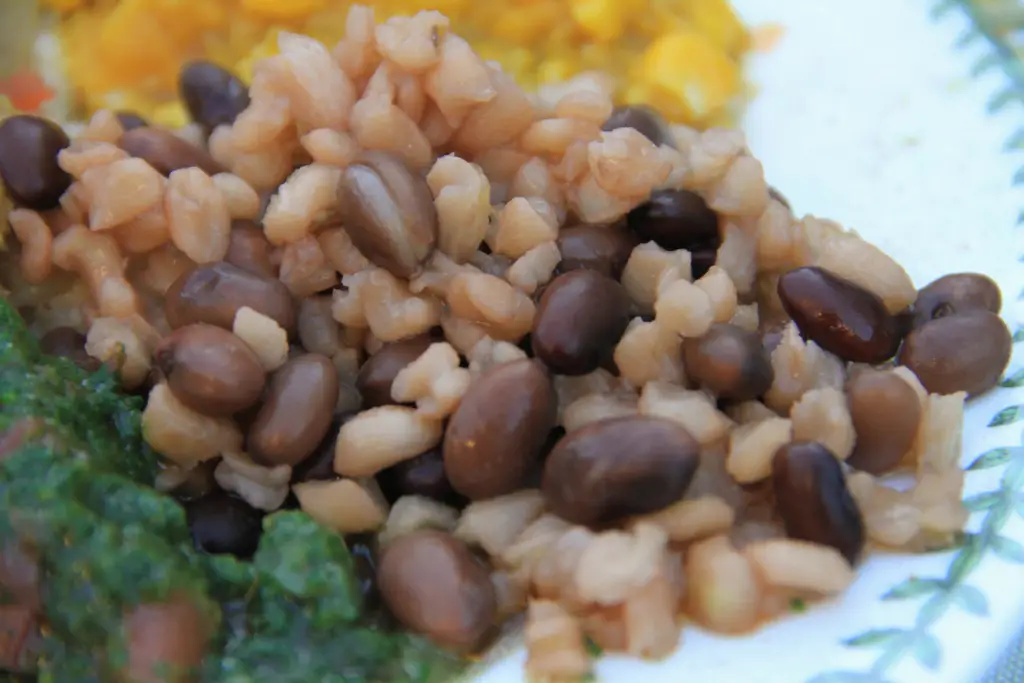
As I explore the authentic cuisine of Eswatini (Swaziland), I find myself captivated by the traditional Eswatini (Swaziland) Swazi dishes that are at the heart of this nation’s culinary heritage. These dishes showcase the unique flavors and cooking techniques that make Swaziland’s food culture so special.
One of the most iconic Eswatini dishes is Sishwala, a flavorful and spicy porridge made from ground cornmeal. It’s often served with a savory relish, such as tender stewed meat or sautéed vegetables, and is a staple meal throughout Eswatini.
Another must-try dish is the hearty and comforting Umncweba, a soup made from dried fish and vegetables. It’s a dish that has been passed down through generations and is often served during special occasions and celebrations.
For those who enjoy a bit of heat, the Eswatini culinary delight known as Incwancwa is a spicy relish made from ground peanuts and chili peppers. It’s a popular accompaniment to grilled meats and adds a bold kick to any dish.
In Eswatini, food is often shared and enjoyed as a community. The traditional Eswatini dish of Siswati is a communal feast that brings people together to share a large pot of stewed meat, vegetables, and beans served with steamed bread or cornmeal porridge.
These traditional Eswatini dishes are just a small sample of the culinary delights that await those who explore the cuisine of Eswatini . Each dish speaks to the unique flavors and cooking techniques that make this African nation’s food culture so rich and diverse.
Take Me to the Recipes
Cooking Techniques and Secrets of Eswatini Cuisine

One of the things that make Eswatini cuisine unique is the cooking techniques passed down through generations. These traditions have been preserved over time and contribute to the authentic and rich flavors of Swazi dishes.
One of the most important techniques in Eswatini cooking is the art of slow-cooking meats. This method not only infuses the meat with flavor, but also allows it to become tender and juicy. Another technique is the use of locally sourced ingredients. Eswatini dishes often feature indigenous vegetables such as imbuya and luselwa, which add unique flavors and nutritional benefits.
When it comes to spices, Swazi cuisine also has its own secrets. One of the most prevalent spices is chilies, which are used in many dishes to add heat and depth of flavor. Other key spices include ginger, garlic, and cumin.
Another important aspect of Eswatini cooking is the use of pots made from clay or cast iron, which are ideal for slow-cooking and retaining heat. These pots are often used to prepare stews and curries, allowing the flavors to develop slowly and creating a rich, aromatic dish.
Overall, Eswatini cooking traditions and techniques contribute to the distinctive and delicious flavors of the country’s cuisine. By using these techniques in your own kitchen, you can experience the authentic taste of Swaziland.
Take Me to the Recipes
Exploring Eswatini Ingredients: The Flavors of Swaziland

Eswatini’s cuisine is heavily influenced by the local ingredients that are available in the region. From indigenous vegetables to staple crops, the flavors of Eswatini are a true representation of the land and the people.
One such ingredient is imbuya, a leafy green vegetable that is often used in stews and soups. It has a slightly bitter taste and is packed with nutrients, making it a healthy addition to any meal.
Another popular ingredient is sorghum, a cereal grain that is used to make porridge, bread and beer. It has a mild, nutty flavor and is a great source of protein, fiber, and vitamins.
And let’s not forget about luselwa, a type of bean that is commonly used in Eswatini cooking. It has a soft texture and a sweet, earthy taste that pairs well with meats and vegetables.
These local ingredients not only add unique flavor profiles to Eswatini cuisine, but they also represent the cultural and agricultural heritage of the nation.
Must-Try Eswatini Recipes: From the Kitchen to Your Plate
Are you ready to bring the flavors of Swaziland into your home? Here are some popular Eswatini recipes that you must try:
Eswatini Food – Emakhowe(mushrooms) with umbidvo (spinach) rolls covered in white sauce

A Taste of Eswatini’s Harvest Bounty
Unveil the flavors of Eswatini with a delightful dish that celebrates the abundance of locally sourced ingredients. Emakhowe, or mushrooms, take center stage alongside the vibrant goodness of umbidvo, or spinach, rolled into a culinary masterpiece.
Originating from the heart of Southern Africa, this recipe not only pays homage to the region’s agricultural richness but also showcases the creativity embedded in Eswatini’s traditional cuisine.
Ingredients:
- For the Mushroom and Spinach Rolls:
- 2 cups fresh mushrooms, finely chopped
- 2 cups spinach, blanched and finely chopped
- 1 onion, finely diced
- 2 cloves garlic, minced
- Salt and pepper to taste
- Olive oil for sautéing
- Egg roll wrappers (available in the store)
- For the White Sauce:
- 2 tablespoons butter
- 2 tablespoons all-purpose flour
- 2 cups milk
- Salt and nutmeg to taste
Recipe:
Preparing the Mushroom and Spinach Filling
- In a pan, sauté diced onions and minced garlic in olive oil until golden brown.
- Add finely chopped mushrooms and spinach, cooking until moisture evaporates.
- Season with salt and pepper, then let the mixture cool.
Rolling the Filling
- Lay out egg roll wrappers and spoon a portion of the mushroom and spinach mixture onto each.
- Roll the wrappers, sealing the edges with a little water.
Baking the Rolls
- Preheat the oven to 375°F (190°C).
- Place the rolls on a baking sheet and bake for 20-25 minutes or until golden brown.
Making the White Sauce
- In a saucepan, melt butter over medium heat.
- Stir in flour until smooth.
- Gradually whisk in milk, ensuring no lumps form.
- Add salt and a pinch of nutmeg, continuing to stir until the sauce thickens.
Serving
- Pour the white sauce over the baked mushroom and spinach rolls.
- Serve warm and enjoy the harmonious blend of flavors.
Serving Size:
This recipe serves 4 people.
Estimated Cooking Time:
Approximately 1 hour.
Nutritional Information (per serving):
- Calories: 320
- Protein: 12g
- Carbohydrates: 40g
- Fat: 14g
- Fiber: 6g
Delight in the fusion of Emakhowe with Umbidvo Rolls Covered in White Sauce – a dish that brings the essence of Eswatini’s culinary heritage to your table!
Eswatini Food – Traditional Sweet Potato and Aubergine Casserole

Exploring Eswatini’s Culinary Heritage: Traditional Sweet Potato and Aubergine Casserole
Dive into the heart of Eswatini’s vibrant culinary tapestry with a dish that reflects the rich history and flavors of this Southern African kingdom. The Traditional Sweet Potato and Aubergine Casserole, a beloved staple in Swazi kitchens, encapsulates the essence of communal meals and the region’s bountiful produce.
Let’s embark on a journey to discover the cultural significance of this dish and bring a taste of Eswatini to your home.
Eswatini Food – Traditional Sweet Potato and Aubergine Casserole Ingredients
- 3 large sweet potatoes, peeled and sliced
- 2 aubergines (eggplants), sliced
- 2 onions, thinly sliced
- 3 tomatoes, diced
- 2 cloves garlic, minced
- 1 cup coconut milk
- 1 cup vegetable broth
- 2 tablespoons olive oil
- 1 teaspoon ground coriander
- Salt and pepper to taste
Eswatini Food – Traditional Sweet Potato and Aubergine Casserole Recipe
Preparing the Vegetables
- Preheat the oven to 375°F (190°C).
- In a large baking dish, layer the sliced sweet potatoes and aubergines.
Sautéing Aromatics
- In a pan, heat olive oil over medium heat.
- Sauté onions and garlic until softened.
- Add diced tomatoes and cook until they release their juices.
Building the Casserole
- Pour the sautéed mixture over the layered sweet potatoes and aubergines.
- Sprinkle ground coriander, salt, and pepper evenly.
Adding Liquids
- In a bowl, mix coconut milk and vegetable broth.
- Pour the liquid mixture over the vegetables, ensuring even coverage.
Baking to Perfection
- Cover the baking dish with foil and bake for 40-45 minutes.
- Uncover and bake for an additional 15-20 minutes until the top is golden.
Serving
- Allow the casserole to cool slightly before serving.
- Serve as a wholesome main dish or a delightful side.
Serving Size:
This recipe serves 6 people.
Estimated Cooking Time:
Approximately 1 hour and 15 minutes.
Nutritional Information (per serving):
- Calories: 220
- Protein: 3g
- Carbohydrates: 40g
- Fat: 7g
- Fiber: 6g
Experience the warmth and flavor of Eswatini with each comforting bite of the Traditional Sweet Potato and Aubergine Casserole!
Swazi Food – Huphe Setindlubu (Thick Porridge Made from Groundnuts)

History and Background of Huphe Setindlubu:
Huphe Setindlubu, a traditional Swazi dish, traces its roots to the heart of Eswatini’s culinary heritage. This thick porridge, made from groundnuts, reflects the region’s reliance on locally sourced ingredients.
Historically, Swazi communities have embraced the simplicity and nourishment of Huphe Setindlubu, creating a dish that embodies the spirit of communal sharing and cultural identity.
Swazi Food – Huphe Setindlubu Ingredients
- 1 cup groundnuts (peanuts)
- 1 cup maize meal
- 4 cups water
- 2 tablespoons sugar (optional)
- Pinch of salt
Swazi Food – Huphe Setindlubu Recipe
1. Roast and Grind Groundnuts:
- Roast the groundnuts in a pan until golden brown.
- Grind the roasted groundnuts into a fine powder.
2. Prepare Maize Meal:
- In a separate pot, mix maize meal with water to create a smooth paste.
3. Cook Maize Meal:
- Cook the maize meal over low heat, stirring continuously until it thickens.
4. Add Groundnut Powder:
- Gradually add the groundnut powder to the cooking maize meal, stirring well.
5. Continue Cooking:
- Allow the mixture to simmer over low heat, ensuring it reaches a thick, porridge-like consistency.
6. Sweeten (Optional):
- Add sugar if desired for a sweeter taste.
- Include a pinch of salt to enhance flavors.
7. Serving Size and Nutritional Information:
- This recipe serves 4 people.
- Estimated Cooking Time: 20-25 minutes.
Nutritional Information (per serving):
- Calories: 300
- Protein: 12g
- Fat: 20g
- Carbohydrates: 25g
- Fiber: 5g
Conclusion:
Huphe Setindlubu embodies the essence of Swazi culinary traditions, marrying the earthy richness of groundnuts with the comforting texture of maize. This dish is a celebration of simplicity, bringing families together around a bowl of warm, nourishing porridge. In every spoonful, Huphe Setindlubu offers a taste of Eswatini’s cultural heritage and the joy of sharing a meal with loved ones.
Swazi Food – Imbuya

History and Background of Imbuya:
Imbuya, a traditional Swazi dish, reflects the rich culinary heritage of Eswatini. Rooted in the region’s agricultural practices, Imbuya is a flavorful mix of indigenous ingredients. This dish holds cultural significance, often prepared during festive occasions and family gatherings.
Imbuya showcases the essence of Swazi traditions and the celebration of communal meals.
Swazi Food – Imbuya Ingredients
- 2 cups maas (sour milk)
- 1 cup ground peanuts
- 1 cup cornmeal
- 1 onion, finely chopped
- 2 tomatoes, diced
- 2 tablespoons vegetable oil
- Salt to taste
- Water (as needed)
Swazi Food – Imbuya Recipe
1. Prepare the Peanut Paste:
- In a skillet, roast the ground peanuts until golden brown.
- Grind the roasted peanuts into a smooth paste, adding water as needed.
2. Cook the Cornmeal:
- In a separate pot, mix the cornmeal with water to create a smooth paste.
- Cook the cornmeal paste over low heat, stirring continuously until it thickens.
3. Combine Peanut Paste and Cornmeal:
- Add the peanut paste to the cooked cornmeal, stirring to combine.
- Continue cooking over low heat until the mixture reaches a thick, porridge-like consistency.
4. Sauté Onions and Tomatoes:
- In a pan, sauté chopped onions and diced tomatoes in vegetable oil until softened.
5. Add Vegetables to Imbuya:
- Mix the sautéed onions and tomatoes into the Imbuya mixture, ensuring even distribution.
6. Season and Serve:
- Season the Imbuya with salt to taste.
- Allow it to simmer for an additional 5-10 minutes until all flavors meld.
7. Serving Size and Nutritional Information:
- This recipe serves 4 people.
- Estimated Cooking Time: 30-40 minutes.
Nutritional Information (per serving):
- Calories: 250
- Protein: 8g
- Fat: 15g
- Carbohydrates: 20g
- Fiber: 5g
Conclusion:
Imbuya encapsulates the heart of Swazi culinary traditions, blending the wholesome flavors of maize, peanuts, and vegetables. This dish brings families together, offering a taste of Eswatini’s cultural identity on each plate. With its simple yet nourishing ingredients, Imbuya stands as a testament to the rich and communal spirit of Swazi cuisine.
Eswatini Food – Sishwala (A Thick Porridge Typically Served with Meat or Vegetables)

History and Background of Sishwala:
Sishwala, a beloved dish in Eswatini, has deep roots in the country’s culinary heritage. Originating from the heart of Southern Africa, Sishwala represents more than just a meal – it reflects the communal spirit and traditions of the Swazi people.
This thick porridge, often served with meat or vegetables, has been a mainstay in Swazi households for generations, connecting people through the shared joy of wholesome, comforting food.
Eswatini Food – Sishwala Ingredients:
- 2 cups maize meal
- 4 cups water
- 1 teaspoon salt
- Optional: Meat or vegetables for serving
Eswatini Food – Sishwala Recipe
1. Prepare Maize Meal Mixture:
- In a pot, mix maize meal and salt.
- Gradually add water while stirring to avoid lumps.
2. Cook Over Medium Heat:
- Place the pot over medium heat, stirring continuously.
3. Simmer Until Thickened:
- Allow the mixture to simmer, stirring frequently until it thickens to the desired consistency.
4. Adjust Salt to Taste:
- Taste and adjust salt if necessary.
5. Serving with Meat or Vegetables:
- Sishwala can be served with your choice of cooked meat or vegetables.
6. Serving Size and Nutritional Information:
- This recipe serves 4 people.
- Estimated Cooking Time: 20 minutes.
Nutritional Information (per serving):
- Calories: 180
- Protein: 3g
- Fat: 1g
- Carbohydrates: 40g
- Fiber: 4g
Conclusion:
Sishwala captures the essence of Eswatini’s culinary traditions, bringing a taste of Swazi culture to your home. As you savor this hearty porridge, envision the warmth of Swazi kitchens and the bonds created over shared meals. Enjoy the simplicity and nourishment that Sishwala offers – a dish that transcends borders, connecting you to the heart of Southern Africa.
Eswatini Food – Sitfubi (Fresh Milk Cooked and Mixed with Cornmeal)

History and Background of Sitfubi:
Sitfubi, a cherished dish in Eswatini, reflects the nation’s rich agricultural traditions and the importance of dairy in the local diet. Originating from the Swazi people, Sitfubi is a delightful fusion of fresh milk and cornmeal, highlighting the availability of dairy resources and staple crops in the region.
This wholesome and comforting dish not only sustains the body but also serves as a tribute to Eswatini’s agrarian heritage.
Eswatini Food – Sitfubi Ingredients
- 2 cups fresh milk
- 1 cup maize meal
- 1 tablespoon sugar (optional)
- Pinch of salt
Eswatini Food – Sitfubi Recipe
1. Prepare Maize Meal Mixture:
- In a bowl, mix maize meal with a pinch of salt.
2. Cook Maize Meal:
- In a pot, add 2 cups of water and bring to a boil.
- Gradually add maize meal while stirring to prevent lumps.
- Simmer and cook until the maize meal is soft and well-cooked.
3. Heat Fresh Milk:
- In a separate pot, heat fresh milk until it’s warm but not boiling.
4. Combine Maize Meal and Milk:
- Slowly pour the cooked maize meal into the warm milk, stirring continuously to avoid clumps.
5. Sweeten (Optional):
- Add sugar if desired, adjusting sweetness to taste.
6. Serving Size and Nutritional Information:
- This recipe serves 2 people.
- Estimated Cooking Time: 20 minutes.
Nutritional Information (per serving):
- Calories: 250
- Protein: 10g
- Fat: 6g
- Carbohydrates: 40g
- Calcium: 300mg
Conclusion:
Sitfubi captures the essence of Eswatini’s agricultural traditions, blending the goodness of fresh milk with the heartiness of maize meal. As you enjoy this simple yet nourishing dish, take a moment to appreciate the cultural significance it holds for the Swazi people. Embrace the taste of Eswatini, where Sitfubi embodies the connection between the land and the delicious meals shared among families.
Eswatini Food – Siphuphe Setindlubu (A Thick Porridge Made from Mashed Ground Nuts)

History and Background of Siphuphe Setindlubu:
Siphuphe Setindlubu, a beloved dish in Eswatini, holds a special place in the hearts and homes of the Swazi people. This thick porridge, made from mashed groundnuts, reflects the agricultural roots of the region.
Groundnuts, a staple crop, are transformed into a hearty, comforting dish that pays homage to Eswatini’s rich farming traditions. Served across generations, Siphuphe Setindlubu not only satisfies hunger but also connects the Swazi people to the bountiful land they call home.
Eswatini Food – Siphuphe Setindlubu Ingredients
- 2 cups groundnuts
- 4 cups water
- Pinch of salt
- Sugar (optional, for sweetness)
Eswatini Food – Siphuphe Setindlubu Recipe:
1. Prepare Groundnuts:
- Roast groundnuts until golden brown. Allow them to cool.
2. Grind Groundnuts:
- Use a mortar and pestle or a food processor to grind the roasted groundnuts into a fine paste.
3. Boil Water:
- In a pot, bring 4 cups of water to a boil.
4. Add Groundnut Paste:
- Gradually add the groundnut paste to the boiling water, stirring continuously to avoid lumps.
5. Cook and Thicken:
- Simmer the mixture over low heat, allowing it to thicken. Add a pinch of salt for flavor.
6. Sweeten (Optional):
- Add sugar if desired, adjusting sweetness to taste.
7. Serving Size and Nutritional Information:
- This recipe serves 4 people.
- Estimated Cooking Time: 30 minutes.
Nutritional Information (per serving):
- Calories: 220
- Protein: 10g
- Fat: 15g
- Carbohydrates: 10g
- Fiber: 5g
Conclusion:
Siphuphe Setindlubu captures the essence of Eswatini’s agricultural heritage, transforming groundnuts into a wholesome porridge. This simple yet flavorful dish embodies the connection between the people and the land. As you savor each spoonful, you’re not just enjoying a meal; you’re experiencing the history and traditions that make Siphuphe Setindlubu a cherished part of Swazi culture.
Eswatini Food – Umbidvo Wetintsanga (Cooked Pumpkin Tops (Leaves) Mixed with Ground Nuts)

History and Background of Umbidvo Wetintsanga:
Umbidvo Wetintsanga, a culinary gem from the heart of Eswatini, has a rich history deeply entwined with Swazi traditions. This dish beautifully represents the resourcefulness of Swazi cuisine, featuring pumpkin tops, known as umbidvo, and groundnuts.
As a landlocked country in Southern Africa, Eswatini’s cuisine often highlights locally sourced ingredients, and Umbidvo Wetintsanga is a testament to the region’s agricultural bounty and culinary ingenuity.
Eswatini Food – Umbidvo Wetintsanga Ingredients
- 4 cups pumpkin tops (umbidvo)
- 1 cup groundnuts, roasted and finely ground
- 1 medium-sized onion, finely chopped
- 2 tomatoes, diced
- 2 tablespoons vegetable oil
- Salt and pepper to taste
Eswatini Food – Umbidvo Wetintsanga Recipe
1. Prepare Pumpkin Tops:
- Wash pumpkin tops thoroughly, removing any tough stems. Chop finely.
2. Roast and Grind Groundnuts:
- Roast groundnuts in a pan until golden brown. Allow them to cool, then grind them into a fine powder.
3. Sauté Onions:
- In a pan, heat vegetable oil over medium heat. Add chopped onions and sauté until golden brown.
4. Add Pumpkin Tops:
- Incorporate the chopped pumpkin tops into the sautéed onions. Cook until the pumpkin tops are wilted.
5. Mix in Groundnuts:
- Stir in the groundnut powder, ensuring an even distribution throughout the dish.
6. Add Tomatoes:
- Toss in diced tomatoes, allowing them to soften and release their flavors.
7. Season to Taste:
- Season with salt and pepper to achieve the desired taste. Adjust according to preference.
8. Serving Size and Nutritional Information:
- This recipe serves 4 people.
- Estimated Cooking Time: 25 minutes.
Nutritional Information (per serving):
- Calories: 210
- Protein: 8g
- Fat: 15g
- Carbohydrates: 15g
- Fiber: 6g
Conclusion:
Umbidvo Wetintsanga is a celebration of Swazi agriculture and culinary creativity. The combination of pumpkin tops and groundnuts creates a dish that is not only delicious but also a nod to the vibrant flavors of Eswatini. Gather around the table and savor this Swazi delight, where simplicity and locally sourced ingredients take center stage.
Eswatini Food – Emasi (A Versatile Fermented Milk Base)

History and Background of Emasi:
Emasi, a culinary staple in Eswatini, holds a significant place in Swazi traditions. Originating from the vibrant culture of Southern Africa, this versatile fermented milk base has been cherished for generations.
Emasi represents the resourcefulness of Swazi communities, where dairy products are transformed into a tangy and probiotic-rich ingredient. Used in various dishes, Emasi reflects the deep connection between Swazi cuisine and the local agricultural landscape.
Eswatini Food – Emasi Ingredients
- 2 cups plain yogurt
- 1 cup buttermilk
- Salt to taste
Eswatini Food – Emasi Recipe
1. Gather Ingredients:
- Ensure you have plain yogurt, buttermilk, and salt ready.
2. Combine Yogurt and Buttermilk:
- In a bowl, mix 2 cups of plain yogurt with 1 cup of buttermilk.
3. Add Salt:
- Sprinkle salt into the mixture to enhance the flavor. Adjust according to taste preferences.
4. Stir Thoroughly:
- Use a spoon to thoroughly mix the ingredients until you achieve a smooth consistency.
5. Fermentation:
- Cover the bowl with a clean cloth and let it sit at room temperature for 6-12 hours, allowing the mixture to ferment.
6. Check Consistency:
- After fermentation, check if the Emasi has thickened and developed a tangy taste. Adjust the salt if needed.
7. Serving Size and Nutritional Information:
- This recipe yields approximately 3 cups of Emasi.
- Estimated Fermentation Time: 6-12 hours.
Nutritional Information (per serving – 1/2 cup):
- Calories: 45
- Protein: 3g
- Fat: 2g
- Carbohydrates: 4g
- Probiotics: Beneficial for gut health
Conclusion:
Emasi serves as the backbone of many Swazi dishes, imparting a delightful tanginess and nutritional benefits. Whether enjoyed on its own or incorporated into various recipes, Emasi reflects the essence of Eswatini’s culinary traditions. Embrace the simplicity and versatility of this fermented milk base, a true embodiment of the cultural richness found in Swazi cuisine.
Eswatini Food – Umncushu (Porridge)

History and Background of Umncushu:
Umncushu, a classic Swazi porridge, is deeply rooted in the culinary traditions of Eswatini, a small, culturally rich kingdom in Southern Africa. Historically, Umncushu has been a symbol of comfort and nourishment for the Swazi people, showcasing the importance of indigenous grains like sorghum in their daily diet.
The preparation of Umncushu reflects the harmony between tradition and sustenance, offering a taste of Eswatini’s cultural heritage.
Eswatini Food – Umncushu Ingredients
- 1 cup sorghum flour
- 3 cups water
- Pinch of salt
- Sugar (optional, to taste)
- Milk (optional, for serving)
Eswatini Food – Umncushu Recipe
1. Mix Sorghum Flour:
- In a bowl, combine 1 cup of sorghum flour with 3 cups of water, ensuring a smooth consistency.
2. Cook Over Heat:
- Pour the mixture into a pot, add a pinch of salt, and cook over medium heat.
3. Stir Continuously:
- Stir the mixture continuously to prevent lumps from forming. The porridge will gradually thicken.
4. Simmer Until Cooked:
- Allow the porridge to simmer for 15-20 minutes or until the grains are fully cooked. Adjust consistency as desired.
5. Sweeten to Taste:
- Add sugar to taste, stirring well to incorporate sweetness. Adjust sugar according to personal preference.
6. Serving and Optional Additions:
- Serve Umncushu warm.
- Optionally, pour milk over the porridge before serving for added richness.
7. Serving Size and Nutritional Information:
- This recipe serves 4 people.
- Estimated Cooking Time: 20 minutes.
Nutritional Information (per serving):
- Calories: 150
- Protein: 3g
- Fat: 1g
- Carbohydrates: 32g
- Fiber: 2g
Conclusion:
Umncushu stands as a testament to Eswatini’s culinary legacy, showcasing the simplicity and nutritional richness of sorghum. Enjoy this warm and hearty porridge as a delightful taste of Swazi comfort, embodying the essence of Eswatini’s traditional food culture. Whether served plain or with a touch of sweetness, Umncushu is a celebration of the kingdom’s agricultural heritage and the joy of shared meals.
Eswatini Food – Emasi Etinkhobe Temmbila (Ground Corn Mixed with Sour Milk)

History and Background of Emasi Etinkhobe Temmbila:
Emasi Etinkhobe Temmbila, a traditional dish from Eswatini, reflects the essence of the Swazi culinary heritage. Ground corn, a staple in this recipe, has been a fundamental ingredient in the region for centuries.
This dish not only represents the resourcefulness of Eswatini’s people but also serves as a cultural symbol, showcasing the significance of fermented foods like sour milk in Swazi gastronomy.
Eswatini Food – Emasi Etinkhobe Temmbila Ingredients
- 2 cups ground corn (maize meal)
- 2 cups sour milk (Emasi)
- Water (as needed for consistency)
- Salt (to taste)
Eswatini Food – Emasi Etinkhobe Temmbila Recipe
1. Prepare Ground Corn:
- In a bowl, mix 2 cups of ground corn with water to form a thick, smooth consistency.
2. Cook Corn Mixture:
- Transfer the corn mixture to a pot and cook over medium heat, stirring constantly to avoid lumps.
3. Simmer Until Cooked:
- Allow the corn mixture to simmer for 10-15 minutes or until fully cooked, ensuring a porridge-like texture.
4. Add Sour Milk:
- Gradually add 2 cups of sour milk (Emasi) to the cooked corn mixture, stirring continuously.
5. Adjust Consistency and Seasoning:
- Adjust the consistency with water if needed and add salt to taste. Continue to stir until well combined.
6. Serve Warm:
- Serve Emasi Etinkhobe Temmbila warm, either as a main dish or a side.
7. Serving Size and Nutritional Information:
- This recipe serves 4 people.
- Estimated Cooking Time: 20 minutes.
Nutritional Information (per serving):
- Calories: 180
- Protein: 5g
- Fat: 2g
- Carbohydrates: 35g
- Calcium: 150mg
Conclusion:
Emasi Etinkhobe Temmbila embodies the simplicity and wholesomeness of Eswatini’s traditional cuisine. This dish not only offers a delicious blend of textures and flavors but also pays homage to the Swazi people’s connection with the land and their resourceful approach to food. Enjoy the rich cultural experience of Emasi Etinkhobe Temmbila as it transports you to the heart of Eswatini’s culinary traditions.
Eswatini Food – Sembila Sinkwa (Classic Corn Bread)

History and Background of Sembila Sinkwa:
Sembila Sinkwa, a classic cornbread from the heart of Eswatini, is a testament to the rich agricultural traditions of the region. Corn, a staple crop, takes center stage in this dish, reflecting the Swazi people’s deep connection to the land. This straightforward yet flavorful recipe encapsulates the essence of Eswatini’s culinary heritage, making it a beloved choice for various occasions.
Eswatini Food – Sembila Sinkwa Ingredients
- 2 cups cornmeal
- 1 cup all-purpose flour
- 1 tablespoon baking powder
- 1 teaspoon salt
- 2 tablespoons sugar
- 2 large eggs
- 1 cup milk
- 1/4 cup melted butter
Eswatini Food – Sembila Sinkwa Recipe
1. Preheat the Oven:
- Preheat your oven to 375°F (190°C) and grease a baking pan.
2. Combine Dry Ingredients:
- In a bowl, mix 2 cups of cornmeal, 1 cup of all-purpose flour, 1 tablespoon of baking powder, 1 teaspoon of salt, and 2 tablespoons of sugar.
3. Beat the Eggs:
- In a separate bowl, beat 2 large eggs.
4. Mix Wet Ingredients:
- To the beaten eggs, add 1 cup of milk and 1/4 cup of melted butter. Mix well.
5. Combine Wet and Dry Mixtures:
- Gradually combine the wet and dry mixtures, stirring until you achieve a smooth batter.
6. Pour into Baking Pan:
- Pour the batter into the greased baking pan, spreading it evenly.
7. Bake:
- Bake in the preheated oven for 25-30 minutes or until a toothpick inserted in the center comes out clean.
8. Cool and Serve:
- Allow the cornbread to cool before slicing. Serve it as a delightful accompaniment to meals.
9. Serving Size and Nutritional Information:
- This recipe serves 8 people.
- Estimated Cooking Time: 35 minutes.
Nutritional Information (per serving):
- Calories: 220
- Protein: 5g
- Fat: 8g
- Carbohydrates: 32g
- Fiber: 3g
Conclusion:
Sembila Sinkwa, with its golden crust and wholesome flavor, encapsulates the warmth and simplicity of Eswatini’s culinary traditions. Whether enjoyed with a savory stew or as a snack, this classic cornbread invites you to savor the essence of Eswatini’s vibrant food culture. Explore the delicious world of Sembila Sinkwa and bring a taste of Eswatini to your table.
Eswatini Food – Chicken in peanut sauce, with rice or pap and local vegetables

Exploring Swazi Delight: Chicken in Peanut Sauce
Embark on a culinary adventure with a dish that mirrors the heart of Eswatini—Chicken in Peanut Sauce. As the sun sets over the breathtaking landscapes of southern Africa, Swazi kitchens come alive with the rich aromas of this cherished recipe.
Rooted in the warmth of community gatherings and traditional flavors, this dish reflects the essence of Swazi hospitality. Let’s dive into the cultural tapestry of Eswatini and discover the joy that this delightful meal brings to families and friends.
Eswatini Food – Chicken in peanut sauce Ingredients
- 4 chicken thighs, bone-in and skin-on
- 1 cup peanut butter
- 2 onions, finely chopped
- 3 tomatoes, diced
- 2 bell peppers, sliced
- 2 cups mixed local vegetables (e.g., spinach, pumpkin leaves)
- 2 cups chicken broth
- 2 tablespoons vegetable oil
- 2 teaspoons curry powder
- Salt and pepper to taste
Eswatini Food – Chicken in peanut sauce Recipe
Preparing the Chicken
- Season the chicken thighs with salt, pepper, and curry powder.
- In a large pot, heat vegetable oil over medium-high heat.
- Brown the chicken thighs on both sides until golden. Remove and set aside.
Sautéing Vegetables
- In the same pot, sauté onions until translucent.
- Add bell peppers, tomatoes, and mixed vegetables. Cook until softened.
Creating Peanut Sauce
- Lower the heat and stir in peanut butter until melted.
- Gradually add chicken broth, stirring to create a smooth sauce.
Simmering and Final Touches
- Return the chicken thighs to the pot, ensuring they are submerged in the peanut sauce.
- Cover and simmer for 30-40 minutes until chicken is tender.
- Adjust seasoning if needed.
Serving
- Serve the Chicken in Peanut Sauce over rice or pap (maize porridge).
- Garnish with fresh herbs and enjoy this Swazi culinary masterpiece!
Serving Size:
This recipe serves 4 people.
Estimated Cooking Time:
Approximately 1 hour.
Nutritional Information (per serving):
- Calories: 450
- Protein: 25g
- Carbohydrates: 20g
- Fat: 30g
- Fiber: 5g
Embrace the spirit of Eswatini with every savory bite of Chicken in Peanut Sauce!
Eswatini Food – Sishibo Senkhukhu (Hearty Chicken Stew)

History and Background of Sishibo Senkhukhu:
Sishibo Senkhukhu, a hearty chicken stew hailing from the picturesque kingdom of Eswatini, carries the essence of the region’s vibrant culinary heritage.
The dish mirrors the Swazi people’s reliance on locally sourced ingredients, showcasing their connection to agriculture and the rich flavors inspired by the diverse landscapes of Eswatini.
Eswatini Food – Sishibo Senkhukhu (Hearty Chicken Stew)
- 1 whole chicken, cut into pieces
- 2 tablespoons vegetable oil
- 1 large onion, finely chopped
- 2 tomatoes, diced
- 2 cloves garlic, minced
- 1 teaspoon ground ginger
- 1 teaspoon paprika
- 1 teaspoon dried thyme
- 3 medium potatoes, peeled and diced
- 3 carrots, sliced
- 2 cups chicken broth
- Salt and pepper to taste
Eswatini Food – Sishibo Senkhukhu (Hearty Chicken Stew) Recipe
1. Prepare the Chicken:
- Rinse the chicken pieces thoroughly and pat them dry with paper towels.
2. Sear the Chicken:
- In a large pot, heat 2 tablespoons of vegetable oil. Sear the chicken pieces until they achieve a golden-brown color. Remove them and set aside.
3. Sauté Aromatics:
- In the same pot, sauté the chopped onion until it becomes translucent. Add minced garlic, ground ginger, paprika, and dried thyme. Stir well.
4. Add Tomatoes:
- Incorporate the diced tomatoes into the pot and cook until they soften.
5. Reintroduce Chicken:
- Place the seared chicken back into the pot, ensuring it combines well with the aromatic mixture.
6. Add Vegetables:
- Introduce diced potatoes and sliced carrots to the pot. Stir to evenly distribute the ingredients.
7. Pour Chicken Broth:
- Pour 2 cups of chicken broth into the pot, covering the ingredients. Season with salt and pepper to taste.
8. Simmer:
- Allow the stew to simmer over medium heat for approximately 40-45 minutes or until the chicken is fully cooked and the vegetables are tender.
9. Check Seasoning:
- Taste the stew and adjust the seasoning if necessary.
10. Serving Size and Nutritional Information:
- This recipe serves 6 people.
- Estimated Cooking Time: 1 hour.
Nutritional Information (per serving):
- Calories: 380
- Protein: 30g
- Fat: 15g
- Carbohydrates: 30g
- Fiber: 5g
Conclusion:
Sishibo Senkhukhu invites you to experience the heartwarming flavors of Eswatini. Bursting with succulent chicken, vibrant vegetables, and aromatic spices, this stew is a delightful representation of the Swazi culinary journey. Serve it over a bed of rice or with a side of traditional Eswatini bread and let the wholesome goodness of Sishibo Senkhukhu grace your table.
Eswatini Food – Incwancwa (Sour Porridge Made from Fermented Cornmeal)

History and Background of Incwancwa:
Embark on a culinary journey to Eswatini, where Incwancwa takes center stage. This traditional dish reflects the heart of Swazi culture, with its roots deeply embedded in the country’s rich agricultural heritage.
Incwancwa, a sour porridge crafted from fermented cornmeal, epitomizes the resourcefulness of the Swazi people in creating flavorful and satisfying meals from locally available ingredients.
Eswatini Food – Incwancwa Ingredients
- 2 cups fermented cornmeal
- 4 cups water
- Pinch of salt
- Sugar (optional, to taste)
Eswatini Food – Incwancwa Recipe
1. Prepare Fermented Cornmeal:
- Start by obtaining or preparing fermented cornmeal. This involves leaving cornmeal and water in a covered container to ferment for a few days until a slightly sour flavor develops.
2. Boil Water:
- In a large pot, bring 4 cups of water to a boil.
3. Add Cornmeal:
- Gradually add the fermented cornmeal to the boiling water, stirring continuously to avoid lumps.
4. Simmer:
- Reduce heat to low and let the mixture simmer, stirring regularly to achieve a smooth consistency. This process takes approximately 15-20 minutes.
5. Season with Salt:
- Add a pinch of salt to enhance the porridge’s flavor. Adjust according to your taste preferences.
6. Optional Sweetening:
- If desired, add sugar to the porridge. Stir well until the sugar dissolves. The amount of sugar can be adjusted based on personal preference.
7. Serving Size and Nutritional Information:
- This recipe serves 4 people.
- Estimated Cooking Time: 30 minutes.
Nutritional Information (per serving):
- Calories: 120
- Protein: 2g
- Fat: 1g
- Carbohydrates: 25g
- Fiber: 3g
Conclusion:
Incwancwa stands as a symbol of Eswatini’s culinary ingenuity, offering a taste of tradition in every spoonful. Whether enjoyed as a comforting breakfast or a wholesome side dish, this sour porridge invites you to savor the simplicity and authenticity of Swazi cuisine. Embrace the warmth and cultural richness that Incwancwa brings to your table, celebrating the essence of Eswatini’s gastronomic heritage.
Eswatini Food – Slaai

History and Background of Slaai:
Embark on a culinary adventure to Eswatini with the vibrant and refreshing Slaai. Hailing from the heart of Swazi traditions, Slaai is a colorful salad that mirrors the lively spirit of the region. This dish is a celebration of the abundance of fresh produce found in Eswatini, where agriculture plays a vital role in shaping the country’s culinary identity.
Slaai not only tantalizes the taste buds but also showcases the bountiful harvests and communal ethos of Swazi culture.
Ingredients:
- 2 cups shredded cabbage
- 1 cup grated carrots
- 1 cup diced cucumber
- 1 cup cherry tomatoes, halved
- 1/2 cup thinly sliced red onion
- 1/4 cup chopped fresh cilantro
- Juice of 1 lemon
- 2 tablespoons olive oil
- Salt and pepper to taste
Recipe:
1. Prepare Vegetables:
- Shred the cabbage, grate the carrots, dice the cucumber, halve the cherry tomatoes, and thinly slice the red onion.
2. Combine Vegetables:
- In a large mixing bowl, combine the shredded cabbage, grated carrots, diced cucumber, cherry tomatoes, sliced red onion, and chopped cilantro.
3. Prepare Dressing:
- In a small bowl, whisk together the lemon juice, olive oil, salt, and pepper to create a refreshing dressing.
4. Toss Salad:
- Pour the dressing over the vegetables and toss the salad gently until the ingredients are evenly coated.
5. Let it Rest:
- Allow the Slaai to rest for about 10 minutes to let the flavors meld.
6. Serving Size and Nutritional Information:
- This recipe serves 4 people.
- Estimated Preparation Time: 15 minutes.
- Estimated Resting Time: 10 minutes.
Nutritional Information (per serving):
- Calories: 80
- Protein: 2g
- Fat: 5g
- Carbohydrates: 10g
- Fiber: 3g
Conclusion:
Slaai is a delightful embodiment of Eswatini’s commitment to wholesome, fresh ingredients. As you indulge in this vibrant salad, you’ll be transported to the sun-kissed landscapes of Eswatini, where Slaai serves as a testament to the beauty of simplicity and the artistry of Swazi culinary traditions. Celebrate the flavors of this colorful dish, embracing the harmony of vegetables and the joy of sharing a taste of Eswatini with your loved ones.
Eswatini Cuisine – Ligusha (Jute Soup)

History and Background of Ligusha:
Embark on a culinary journey to Eswatini with Ligusha, a flavorful and hearty Jute Soup deeply rooted in the region’s rich culinary heritage. Eswatini, nestled in southern Africa, boasts a vibrant food culture influenced by indigenous ingredients and traditional cooking methods.
Ligusha, featuring jute leaves, reflects the Swazi people’s connection to the land and their resourceful approach to creating nourishing dishes. This soup not only satisfies the taste buds but also showcases the resilience and creativity of Eswatini’s culinary traditions.
Eswatini Cuisine – Ligusha (Jute Soup) Ingredients
- 2 cups chopped jute leaves (ligusha)
- 1 cup chopped spinach
- 1 cup diced tomatoes
- 1/2 cup chopped onions
- 1/4 cup chopped bell peppers
- 2 cloves garlic, minced
- 1/4 cup vegetable oil
- 4 cups vegetable or chicken broth
- Salt and pepper to taste
Eswatini Cuisine – Ligusha (Jute Soup) Recipe
1. Prepare Vegetables:
- Wash and chop the jute leaves, spinach, tomatoes, onions, and bell peppers.
2. Sauté Aromatics:
- In a large pot, heat vegetable oil over medium heat. Sauté chopped onions and minced garlic until fragrant.
3. Add Vegetables:
- Add chopped jute leaves, spinach, tomatoes, and bell peppers to the pot. Stir well.
4. Pour Broth:
- Pour vegetable or chicken broth into the pot, ensuring it covers the vegetables.
5. Season:
- Season the soup with salt and pepper to taste. Stir and bring to a gentle boil.
6. Simmer:
- Reduce heat to low, cover the pot, and let the soup simmer for approximately 20–25 minutes, allowing the flavors to meld.
7. Serving Size and Nutritional Information:
- This recipe serves 4 people.
- Estimated Preparation Time: 15 minutes.
- Estimated Cooking Time: 25 minutes.
Nutritional Information (per serving):
- Calories: 120
- Protein: 3g
- Fat: 8g
- Carbohydrates: 10g
- Fiber: 4g
Conclusion:
Ligusha offers a taste of Eswatini’s commitment to wholesome and locally-sourced ingredients. As you savor this nourishing Jute Soup, you’ll connect with the heart of Swazi cuisine and experience the warmth and hospitality embedded in every bowl. Ligusha is a testament to the culinary ingenuity of Eswatini, inviting you to embrace the simplicity and authenticity of this beloved dish in your own kitchen.
Eswatini Cuisine – Chicken Dust (Barbeque chicken)

History and Background of Chicken Dust:
Embark on a culinary adventure to Eswatini with Chicken Dust, a delectable barbeque chicken dish deeply rooted in the region’s rich culinary tapestry. Eswatini, situated in southern Africa, boasts a diverse food culture influenced by indigenous flavors and traditional cooking techniques.
Chicken Dust, known for its savory and aromatic profile, showcases the Swazi people’s love for communal gatherings and vibrant, flavorful dishes. As you delve into this recipe, you’ll experience the warmth and hospitality that define Eswatini’s gastronomic traditions.
Eswatini Cuisine – Chicken Dust Ingredients
- 4 chicken leg quarters
- 1 cup barbeque sauce
- 1 tablespoon vegetable oil
- 1 teaspoon smoked paprika
- 1 teaspoon garlic powder
- 1 teaspoon onion powder
- 1/2 teaspoon cayenne pepper
- Salt and pepper to taste
Eswatini Cuisine – Chicken Dust Recipe
1. Prepare Chicken:
- Clean and pat dry the chicken leg quarters.
2. Make Spice Rub:
- In a bowl, mix smoked paprika, garlic powder, onion powder, cayenne pepper, salt, and pepper to create a spice rub.
3. Apply Spice Rub:
- Rub the spice mixture evenly over the chicken leg quarters, ensuring each piece is well-coated.
4. Marinate:
- Place the seasoned chicken in a resealable bag or marinating dish. Allow it to marinate in the refrigerator for at least 2 hours or overnight for enhanced flavor.
5. Preheat Grill:
- Preheat your grill to medium-high heat.
6. Grill Chicken:
- Brush the grill grates with vegetable oil to prevent sticking. Place the marinated chicken on the grill and cook for 20–25 minutes, turning occasionally, until the internal temperature reaches 165°F (74°C).
7. Glaze with Barbeque Sauce:
- During the last 10 minutes of grilling, brush the chicken leg quarters with barbeque sauce, allowing it to caramelize.
8. Serving Size and Nutritional Information:
- This recipe serves 4 people.
- Estimated Preparation Time: 15 minutes.
- Marinating Time: 2 hours or overnight.
- Estimated Cooking Time: 25 minutes.
Nutritional Information (per serving):
- Calories: 320
- Protein: 28g
- Fat: 18g
- Carbohydrates: 12g
- Fiber: 1g
Conclusion:
Chicken Dust embodies the essence of Eswatini’s culinary delights, offering a savory journey to the heart of Swazi barbeque traditions. With its flavorful spice rub and succulent texture, this dish is a celebration of community and the joy of sharing delicious meals. Bring the spirit of Eswatini to your table by crafting Chicken Dust—a dish that not only tantalizes your taste buds but also invites you to experience the warmth and richness of Swazi cuisine.
Eswatini Cuisine – Chicken Curry

This aromatic and spicy dish is a favorite in Swaziland. To recreate it at home, you’ll need:
- 1 pound chicken breast, cubed
- 1 onion, chopped
- 2 garlic cloves, minced
- 1 tablespoon curry powder
- 1 teaspoon ground ginger
- 1 teaspoon ground cumin
- 1 can of coconut milk
- Salt and pepper to taste
- 2 tablespoons vegetable oil
How To Prepare
Begin by heating the oil in a large skillet over medium-high heat. Add the chicken and cook until browned. Remove the chicken from the skillet and set aside. In the same skillet, add the onion and garlic and cook until soft. Stir in the curry powder, ginger, and cumin.
Cook for about a minute, stirring constantly. Add the coconut milk and stir until combined. Return the chicken to the skillet and bring the mixture to a boil.
Reduce the heat and let simmer for about 20-25 minutes, or until the chicken is cooked through. Season with salt and pepper to taste and serve with rice or naan bread.
Eswatini Cuisine – Dombolo (Steamed Bread)

Dombolo, also known as steamed bread or dumplings in various parts of southern Africa, is a favorite staple in Eswatini (Swaziland) and neighboring countries like South Africa and Lesotho. Unlike the traditional oven-baked bread, Dombolo is soft, moist, and has a slightly denser texture due to its steaming process.
Background to Dombolo
In Eswatini and many other African nations, bread is a staple food that complements the main dish, often used to scoop up meat, vegetables, or sauces.
Dombolo stands out because of its unique preparation method and texture. It’s especially popular in rural areas where ovens might not be readily available, but it has also found its way into urban households due to its delicious taste and versatility.
Eswatini Cuisine – Dombolo Ingredients:
- 500g (about 4 cups) all-purpose flour or bread flour
- 2 tsp instant yeast
- 2 tbsp sugar
- 1 tsp salt
- 2 tbsp butter, melted
- 250 ml (about 1 cup) warm water (you might need a bit more or less, depending on the flour)
- 1 tbsp oil (for greasing the steaming bowl/container)
Eswatini Cuisine – Dombolo Directions
Preparing the Dough
- In a large mixing bowl, combine the flour, instant yeast, sugar, and salt.
- Add the melted butter to the mixture.
- Gradually add warm water, mixing continuously, until a soft and non-sticky dough forms. You may not need all the water, or you might need a bit more, so it’s best to add it gradually.
- Knead the dough on a floured surface for about 10 minutes until it becomes smooth and elastic.
First Rise
- Place the kneaded dough back into the mixing bowl and cover it with a clean cloth or plastic wrap.
- Let it rise in a warm place for about 1 hour or until it has doubled in size.
Preparation for Steaming
- After the dough has risen, punch it down gently to release the air.
- Shape the dough into a round or oval shape, depending on the shape of your steaming container.
- Grease the inside of a suitable container or bowl with oil. You can use a stainless steel bowl, a traditional steaming basket, or any container that can fit inside your steaming pot and is safe for steaming.
- Place the shaped dough into the greased container.
Steaming
- Fill a large pot about a quarter full with water and bring it to a boil.
- Once the water is boiling, reduce the heat to a simmer.
- Place a steaming rack or an upside-down bowl at the bottom of the pot. This will elevate your bread container, preventing it from touching the boiling water.
- Place the container with the dough onto the rack or elevated surface in the pot. Ensure the water does not touch the bottom of the bread container.
- Cover the pot with a tight-fitting lid to trap the steam.
- Steam the bread for about 45 minutes to an hour. Make sure to check the water level occasionally and add more if needed to prevent the pot from drying out.
- The Dombolo is ready when it has expanded, is firm to the touch, and a skewer or toothpick inserted into it comes out clean.
Serving
- Once cooked, remove the Dombolo from the pot and let it cool slightly before serving.
- Serve it warm as an accompaniment to stews, curries, or any saucy dish.
Dombolo is a delightful alternative to oven-baked bread, offering a unique texture and taste. The steaming process ensures a moist bread that pairs wonderfully with a variety of dishes in Eswatini cuisine. Enjoy!
Swazi Food – Sidvudvu

Sidvudvu is a traditional Swazi dish that is made with pumpkin and maize. It is a type of porridge that is often served as a side dish or a filler with stews and sauces. Sidvudvu is also known as pumpkin pap, and it has a sweet and nutty flavor. Here are some facts about sidvudvu and its history:
- Sidvudvu is derived from the word “vudvu”, which means “to mix” in siSwati, the language of the Swazi people.
- Sidvudvu is one of the many variations of pap, which is a staple food in Southern Africa. Pap is usually made with maize or sorghum, but sidvudvu adds pumpkin for extra nutrition and taste2.
- Sidvudvu is a common dish in eSwatini, formerly known as Swaziland, a small landlocked country in Southern Africa. eSwatini is the last absolute monarchy in Africa, and its culture and traditions are rich and diverse.
- Sidvudvu can be made with different types of pumpkins or squash, depending on the availability and preference. Some people also add sour cream, cumin, nutmeg, or other spices to enhance the flavor.
- Sidvudvu is easy to make and requires only a few ingredients. Here is a list of ingredients and a simple recipe for sidvudvu:
Swazi food – Sidvudvu Ingredients:
- 1 small pumpkin, peeled and cubed
- 1/2 cup of ground maize
- 2 cups of water (or more as needed)
- Salt to taste
- Optional: sour cream, cumin, nutmeg, pumpkin seeds
Swazi food – Sidvudvu Recipe
- In a large pot, combine the pumpkin and ground maize. Add enough water to cover the pumpkin. Bring to a boil.
- Boil for about 30 minutes, adding more water if necessary, until the pumpkin is tender and the mixture is thick.
- Drain off any excess liquid. Mash the cooked pumpkin and maize together, adding salt and any optional ingredients to taste.
- Serve warm, garnished with pumpkin seeds if desired.
I hope you enjoy this delicious Swazi dish!
Swazi Food – Ting

Ting is a sour porridge that is made with sorghum and maize. It is a traditional dish in Eswatini, formerly known as Swaziland, a small country in Southern Africa. Here are some facts and steps to make ting:
- Ting is derived from the word “tinhla”, which means “to ferment” in siSwati, the language of the Swazi people.
- Ting is one of the variations of pap, which is a staple food in Southern Africa. Pap is usually made with maize or sorghum, but ting adds fermentation for extra nutrition and taste.
- Ting is often served with tshohlo, which is pulled beef cooked with onion, beef stock, and bay leaf. Ting and tshohlo is a popular dish at weddings and special occasions in Eswatini.
- Ting can be made with different types of sorghum, depending on the availability and preference. Some people also add sour cream, cumin, nutmeg, or other spices to enhance the flavor.
- Ting is easy to make and requires only a few ingredients. Here is a list of ingredients and a simple recipe for ting:
Ting Ingredients
- 375 g sorghum
- water
- 250 g maize meal
- salt to taste
- Optional: sour cream, cumin, nutmeg
Swazi Food – Ting Recipe
- Place the sorghum in a plastic container and stir in enough water to form a paste. Seal and allow to ferment overnight.
- Bring 500 ml of water to a boil in a saucepan. Add a pinch of salt.
- Mix the maize meal into the fermented sorghum. Gradually add the mixture to the boiling water, stirring to break up any lumps. Use a whisk for better results.
- Once thickened, cover and cook for 10 minutes over a medium heat, stirring occasionally.
- Using a wooden spoon, stir and turn the pap to break up any lumps that may have formed. Cook for another 20 minutes, or until cooked through.
- Serve warm, with sour cream, cumin, nutmeg, or any other optional ingredients to taste.
I hope you enjoy this delicious Eswatini dish!
Swazi Food – Tshotlo

Tshotlo is a dish of shredded beef cooked with onion, beef stock, and bay leaf. It is a traditional comfort food in Eswatini, formerly known as Swaziland, a small country in Southern Africa. Tshotlo is often served with ting, which is a sour porridge made from fermented sorghum and maize meal. Here are some facts, ingredients, and steps to make tshohlo:
- Tshotlo is derived from the word “tshotlho”, which means “to pull” in siSwati, the language of the Swazi people.
- Tshotlo is one of the variations of tshotlho, which can be made with different types of meat, such as lamb, goat, or chicken.
- Tshotlo is a popular dish at weddings and special occasions in Eswatini, but it can also be enjoyed any time of the year.
Swazi Food – Tshotlo – Ingredients
- 1 kg beef brisket, cut into 2-3 large pieces
- 4 T canola oil
- 4 cloves garlic, finely chopped
- 1 onion, finely chopped
- 2/3 cup orange juice
- 2 T lime juice
- 1 x 400 g can chopped tomatoes
- 2 cups beef stock
- Salt and black pepper, to taste
Tshotlo Recipe
- Rub the meat with salt, pepper, and any other spices you like.
- Heat the oil in a large pot over high heat. Add the meat and cook until well browned, about 15 minutes. Remove from the pot and set aside.
- Reduce the heat to medium. Add a little more oil to the same pot, then add the garlic and onion and cook until soft, about 10 minutes.
- Add the orange and lime juice to the pot, scraping the bottom to loosen any bits.
- Add the tomatoes, stock, and meat and bring to a boil. Lower the heat and simmer, covered, for 2-3 hours, or until the meat is tender enough to shred.
- Remove the meat from the pot and shred using two forks. Set aside.
- Place the remaining sauce in the pot on the stovetop and simmer, uncovered, for 15-20 minutes to reduce and thicken. Adjust the seasoning if necessary.
- Serve the shredded beef with some of the sauce, and with ting or any other side dish you prefer.
Eswatini Cuisine – Bobotie

Bobotie is a beloved dish in southern Africa, particularly in South Africa. It’s not exclusive to Eswatini (Swaziland), but it’s enjoyed there as well. The dish’s origins are mixed, with influences from the Malay, Indonesian, and Dutch cuisines, brought to southern Africa through colonization and trade.
Background Bobotie
Bobotie is a spiced, baked meat dish, often made with minced meat and topped with an egg-based custard. Sweet and savory, it incorporates dried fruits, spices, and bread soaked in milk, giving it a unique and delightful texture and flavor. The dish is usually served with yellow rice, chutney, and sometimes a side of banana slices or sambals.
Eswatini Cuisine – Bobotie Ingredients:
For the Meat Mixture
- 500g (about 1 lb) minced beef or lamb
- 2 onions, finely chopped
- 2 cloves garlic, minced
- 2 slices of white bread
- 1 cup milk
- 1/2 cup raisins or sultanas
- 1 apple, peeled and finely grated
- 2 tbsp curry powder
- 1 tbsp sugar
- 1 tsp turmeric
- 2 tbsp chutney
- 2 tbsp vinegar or lemon juice
- 1 tbsp Worcestershire sauce
- 1/2 cup slivered almonds (optional)
- Salt and pepper to taste
- 1 bay leaf or a few lemon/orange leaves
For the Custard Topping:
- 1 cup milk
- 2 large eggs
- Pinch of turmeric or saffron (for color)
Eswatini Cuisine – Bobotie Directions
Bread Soaking:
- Soak the bread slices in the 1 cup of milk. Once softened, squeeze out the excess milk and reserve the milk for later. Crumble the bread.
Meat Mixture:
- In a large skillet or frying pan, heat some oil and sauté the onions until translucent.
- Add the minced garlic and sauté for another minute.
- Add the minced meat and brown it, breaking it up as it cooks.
- Once browned, stir in the curry powder, sugar, turmeric, and a pinch of salt and pepper. Cook for another couple of minutes.
- Add the soaked and crumbled bread, raisins/sultanas, grated apple, chutney, vinegar (or lemon juice), Worcestershire sauce, and slivered almonds (if using) to the meat mixture. Mix well to combine.
- Preheat your oven to 180°C (350°F).
Assembling:
- Transfer the meat mixture to a greased ovenproof baking dish and spread it out evenly.
- Tuck the bay leaf or lemon/orange leaves into the meat mixture – this is traditionally added for flavor and garnish.
Topping:
- Beat the eggs with the reserved milk from soaking the bread and a pinch of turmeric or saffron.
- Pour this mixture over the meat in the baking dish.
Baking:
- Place the dish in the preheated oven and bake for about 30-40 minutes or until the egg custard is set and lightly browned on top.
Serving:
- Serve the bobotie hot with yellow rice and accompaniments like chutney, banana slices, or sambals.
Bobotie is a flavorful dish, rich with history and cultural influences. The combination of spices, dried fruits, and meat provides a perfect balance of sweet and savory, making it a favorite in households across southern Africa, including Eswatini. Enjoy!
Swazi Food – Umkhunsu (Dried, cooked goat meat – a Swazi favorite).

Umkhunsu is a traditional dish from Eswatini. It is a type of dried meat, usually beef or goat, that is first cooked and then sun-dried. It is often eaten with porridge or bread, and sometimes with sour milk or vegetables. Umkhunsu is similar to umncweba, another Swazi dried meat, but the difference is that umncweba is not cooked before drying.
Swazi Food – Umkhunsu Ingredients
To make umkhunsu, you will need the following ingredients:
- 1 kg of beef, cut into thin strips
- Salt, to taste
- Black pepper, to taste
- Vinegar, to taste
- Paprika, to taste
- Garlic, to taste
- Bay leaves, to taste
Swazi Food – Umkhunsu Recipes
- Season the beef strips with salt, pepper, vinegar, paprika, garlic, and bay leaves. You can adjust the amount of spices according to your preference.
- Place the seasoned beef in a pot and add enough water to cover it. Bring to a boil and then lower the heat and simmer until the meat is tender, about an hour.
- Drain the meat and let it cool slightly. Then, hang the meat strips on a rack or a clothesline in a sunny and airy place. Make sure the meat is not touching each other or any surface.
- Leave the meat to dry for several days, turning it occasionally, until it is hard and dry. You can also use a dehydrator or an oven to speed up the process, but the traditional method is to use the sun.
- Store the umkhunsu in an airtight container or a plastic bag. You can eat it as a snack or rehydrate it by soaking it in water or boiling it in a stew. Enjoy your umkhunsu with your favorite accompaniment.
Swazi Food – Sidvwashini

Sidvwashini is made with pumpkin leaves, which are cooked with water, salt, and oil until they are soft and tender. The dish is usually served with pap, a thick porridge made from maize or sorghum.
To make sidvwashini, you will need the following ingredients:
- About 500 grams of pumpkin leaves, washed and chopped
- Water, enough to cover the leaves
- Salt, to taste
- Cooking oil, about 2 tablespoons
To prepare sidvwashini, follow these steps:
- In a large pot, bring water to a boil and add salt.
- Add the pumpkin leaves and cook for about 20 minutes, or until they are soft and wilted.
- Drain the excess water and return the leaves to the pot.
- Add oil and stir well to coat the leaves.
- Serve hot with pap or your preferred starch.
Sidvwashini is a simple but nutritious dish that is rich in vitamin A, iron, and fiber. It is a staple food for many Eswatini people, especially in rural areas. It can also be eaten with meat, beans, or other vegetables for a more balanced meal. Enjoy!
These are just a few of the many delicious Swazi recipes that you can try in your own kitchen. Experiment with different flavors and ingredients to create your own unique Swazi-inspired dishes. It’s time to savor the taste of Swaziland cuisine right in the comfort of your own home!
Conclusion
I hope you enjoyed joining me on our culinary journey to explore the authentic cuisine of Swaziland. We have discovered traditional Swazi dishes that showcase the unique flavors and cooking techniques of this African nation. It has been fascinating to learn about the cooking traditions and techniques that make Swazi cuisine so special. Using locally sourced ingredients and slow-cooking meats are just some of the secrets behind the perfect execution of Swazi recipes.
We have also taken a closer look at the ingredients that form the foundation of Swazi cuisine. From indigenous vegetables to staple crops like maize and sorghum, we have discovered the flavors and nutritional benefits of these local ingredients. It’s amazing how these ingredients come together to create some of Swaziland’s most iconic dishes.
Bring Swaziland Cuisine to Your Plate
Now that we know more about the unique flavors of Swaziland, it’s time to bring them into our own homes. Whether you try out some of the must-try Swazi recipes we shared or experiment with your own take on Swazi cuisine, the possibilities are endless. Let’s appreciate this vibrant African culinary heritage and savor the deliciousness of Swaziland’s cuisine.
Thank you for joining me on this journey to explore Swaziland’s cuisine and recipes. I hope you’ll continue to explore more global food cultures and expand your palate. Cheers to delicious adventures in the kitchen!
FAQ
What is Swaziland cuisine known for?
Swaziland cuisine is known for its rich flavors, vibrant spices, and use of locally sourced ingredients. Traditional Swazi dishes often incorporate staple crops like maize and sorghum, as well as indigenous vegetables and spices.
What Characterizes Eswatini Recipes?
Eswatini recipes showcase the rich culinary heritage of the small African kingdom. From traditional dishes like umkhunsu and sidvwashini, to modern fusion creations like piri-piri chicken, Eswatini offers a diverse range of flavors and vibrant local ingredients. Explore the unique tastes of Eswatini through these authentic recipes.
What is Swazi Culture Food?
Swazi culture food is known for its rich flavors and traditional cooking methods. Staple dishes include sishwala, a thick porridge made from maize meal, and emasi, a sour milk commonly used in soups and stews.
Other popular dishes include marinated meats like beef and chicken, often grilled or stewed, along with seasonal vegetables and fruits.
What are some popular traditional Swazi dishes?
Some popular traditional Swazi dishes include Sishwala, a flavorful and spicy porridge made from maize and served with various accompaniments, and Umncweba, a hearty and comforting dish made with dried fish and maize meal.
What are some cooking techniques unique to Swazi cuisine?
Swazi cuisine utilizes cooking techniques such as slow-cooking meats to achieve tender and flavorful results. The use of open fire and traditional cooking methods is also prevalent in Swazi cooking.
What are some key ingredients in Swazi cuisine?
Swazi cuisine makes use of indigenous vegetables like imbuya and luselwa, as well as staple crops such as maize and sorghum. The flavors of Swazi cuisine are also enhanced by various spices and herbs that are locally sourced.
Can I try cooking Swazi recipes at home?
Absolutely! We encourage you to try recreating some of the delicious Swazi recipes in your own kitchen. From aromatic Chicken Curry to sweet and savory Dombolo, there are many Swazi dishes that you can enjoy making and savoring at home.

